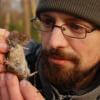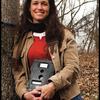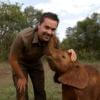Sensors already equip a range of tools to enhance monitoring capacity for conservation. Some of the higher bandwidth technologies, like camera traps and acoustic monitoring systems, have been essential elements of the conservation toolkit for decades, and thus have enough users that we've created dedicated WILDLABS groups to address them. But a whole range of lower bandwidth sensors beyond these core technologies are being increasingly integrated into conservation monitoring systems, and offer rich new insights into the wildlife and ecosystems we're all working to protect. As with many technologies, cost and access have historically been challenges to the adoption of new sensors, but with low-cost and open-source solutions on the rise, we're excited to see what the future of this space holds.
Getting Started with Sensors:
- Watch Shah Selbe's Tech Tutors episode on scaling FieldKit, an open-source conservation sensor toolbox, from a project to a successful conservation tech product.
- Check out our Virtual Meetup about Low-Cost, Open-Source Solutions in conservation tech, including a talk by Alasdair Davies on the Arribada Initiative's work with thermal sensors in early warning systems.
- For a more in-depth introduction, watch the first video in our datalogger mini-series: Freaklabs: How do I get started with Arduino?
In this group, you'll meet others who are using and innovating diverse sensors in their work, discuss ways to make sensors more effective & accessible for conservationists, learn about what sensors are already helping us accomplish in the field, and have the opportunity to ask and answer questions. Join this group to get started!
Header image: Emma Vogel, University of Tromsø
No showcases have been added to this group yet.
Samantha is a founding member and runs the Kelp Forest Foundation which looks to fill the gaps in the science around kelp cultivation.
- 0 Resources
- 1 Discussions
- 1 Groups
Wildfowl & Wetlands Trust (WWT)
Technological support in WWT's Conservation Evidence Department - recently made redundant
- 0 Resources
- 2 Discussions
- 5 Groups
University of Melbourne
- 0 Resources
- 4 Discussions
- 7 Groups
Retired engineer, with long term interest in ecology and all things tech.
- 0 Resources
- 1 Discussions
- 6 Groups
World Wide Fund for Nature/ World Wildlife Fund (WWF)
- 0 Resources
- 0 Discussions
- 8 Groups
- 0 Resources
- 1 Discussions
- 1 Groups
CSIR-Central Scientific Instruments Organisation
- 0 Resources
- 1 Discussions
- 2 Groups
- 0 Resources
- 2 Discussions
- 10 Groups
- 0 Resources
- 0 Discussions
- 8 Groups
Columbia University
Graduate Student in the department of Anthropology
- 0 Resources
- 0 Discussions
- 12 Groups
- 0 Resources
- 3 Discussions
- 3 Groups
- 0 Resources
- 6 Discussions
- 4 Groups
Technology is rapidly changing the way communities monitor wildlife movement and prevent or mitigate human-wildlife conflict. This case study from Appiko delves into field testing of the open source sensor warning...
25 February 2020
The Arribada Initiative is back with an update on their thermal elephant alert system which aims to reduce human-elephant conflict (HEC). The success of their system rests on the ability of a camera to accurately...
17 February 2020
Applications are now open for a second round of the £10 million UK Seafood Innovation Fund to transform the future landscape of the seafood industry.
11 February 2020
Microbial fuel cells, developed by Plant-powered Camera Trap Challenge winners Plant-E, have been used successfully with Xnor.ai's energy harvesting camera technology to capture what are thought to be the world's first...
15 October 2019
Article
How do we actually know a whale weighs 40 tonnes? After all, we can’t exactly capture an animal the size of a bus and simply put it on a scale. Fredrik Christiansen explains their new, non-invasive way of weighing...
9 October 2019
Article
In the past six months Instant Detect 2.0 has physically emerged, with the first prototype systems built and ready for testing at the start of April. The ZSL team is now well into their optimisation and hardening phase...
3 September 2019
The European Space Agency’s “Environmental Crimes” thematic call offers support and funding of up to €60,000 per activity to companies looking to develop services tackling illegal water, air and land polution using...
22 August 2019
Sharing failure, tech support for conservation, roaming mentors, conservation tech hype cycles and developing new road maps - participants in our tech workshops at ICCB 2019 shared an abundance of ideas for how to shape...
21 August 2019
Article
In this From the Field interview, we talk to Melissa Schiele, a tech whiz, marine ecologist, and conservationist at the Zoological Society of London. She shares with us about her work helping to develop the first-ever...
10 June 2019
The WILDLABS TECH HUB is supporting technology solutions tackling the illegal wildlife trade, in collaboration with the Foreign & Commonwealth Office, Digital Catapult, Satellite Applications Catapult, Amazon Web...
4 June 2019
Ol Pejeta Conservancy partners with conservation and technology organisations to kick-start a research and innovation centre for wildlife conservation
31 May 2019
FLIR announces the launch of their Conservation Discount Program, which offers projects the opportunity to qualify for a 30% discount on select thermal, visible, and maritime products. Share your conservation plan and...
23 May 2019
August 2025
event
September 2025
event
March 2026
July 2021
December 2020
June 2020
17 Products
Recently updated products
121 Products
3 R&D Projects
84 Organisations
Recently updated products
Recently updated R&D Projects
Recently updated organisations
| Description | Activity | Replies | Groups | Updated |
|---|---|---|---|---|
| Have you ever wanted to get a sample from the top of a tree, without having to climb it or shoot it out with a shotgun? Would it... |
|
Sensors | 4 years 9 months ago | |
| Hello Rob, I have seen the bracelet style used on large mammals with mixed success and failure. The main considerations are terrain the animal uses, and fitting the bracelet... |
|
Sensors | 4 years 9 months ago | |
| Amazing stuff Andrew! The dips in light idea made me think of exoplanet hunting straight away! Such a cool idea!! |
|
Sensors | 4 years 10 months ago | |
| Hi Akiba No worries, thanks for responding! I'd love to delve into more detail on this once the new series has started and I have an idea of the tools and kit required!... |
|
Open Source Solutions, Sensors | 4 years 11 months ago | |
| Hi Maxine, There are pros and cons to switching regulators and linear regulators. Linear regulators "throw away" the excess voltage in order to maintain a... |
|
Open Source Solutions, Sensors | 4 years 11 months ago | |
| Hi. I've been following the opencollar initiative and was wondering what the current status is. The project looks amazing! |
|
Sensors | 5 years ago | |
| Hi all, Some ETAG rfid-readers developped by Eli Bridge et al. are now avaible at https://www.labmaker.org/collections/earth-and-ecology/products/etag. The price is high,... |
|
Sensors | 5 years ago | |
| Hi all, Some ETAG rfid-readers are now avaible at https://www.labmaker.org/collections/earth-and-ecology/products/etag. The price is high, though: USD139. Yvan |
|
Sensors | 5 years ago | |
| I'd love to chat more! I'll be reaching out soon! |
|
Sensors | 5 years 1 month ago | |
| Yes im hoping the power bank and a few extra mp3s will get it done this year. will look into a better system this winter now that I have some help:) |
|
Sensors | 5 years 3 months ago | |
| Please see my edits above |
+4
|
Sensors | 5 years 3 months ago | |
| We are developing a Raspberry Pi 4 sized SDR --- frequency range 20Mhz-6GHz. Rx Sensitivity around 120 --- higher is possible with some... |
|
Sensors | 5 years 3 months ago |









































